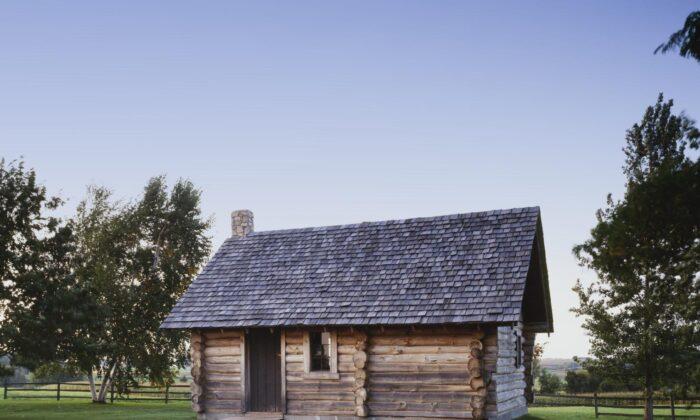Life on Plum Creek that June of 1875 looked bright as a new penny to Charles Ingalls, his wife Caroline, and their three young daughters.
Like many other settlers who brought their families to these plains, Charles was a self-reliant man with many talents and interests. In addition to his farming and carpentry skills, he could hunt and trap, care for his livestock, repair broken equipment, and, when the occasion demanded, hire himself out for any number of odd jobs demanding a strong back and a quick mind. He enjoyed reading—a valued personal possession was “The Polar and Tropical Worlds” with its 200 illustrations—and somewhere along the way he’d learned to play the fiddle, providing himself and his family with hours of musical entertainment.
But sometimes, all the self-reliance and skill in the world can’t prevent a disaster.

A Day Unlike Any Other
On this particular day, Charles had just sat down for dinner with his family in their new home that he had built. He was describing the health and beauty of the wheat when the Ingalls family heard their neighbor, Olena Nelson, screaming, “The grasshoppers are coming!”Only, they weren’t grasshoppers. They were locusts—a tiny part of the biggest swarm ever recorded in human history. An estimated 3.5 trillion whirring insects from hell that would eventually cover 198,000 square miles. And like a nightmare, they descended on the Ingalls homestead.

Charles grabbed his hat and dashed toward the wheat field, where he frantically piled straw and manure around parts of the field, then lit them afire in hopes that the smoke would keep the locusts away. But by the middle of his second day in this one-sided battle, his efforts had proven utterly futile. He gave up and returned to the house, exhausted, filthy, and bleary-eyed from the smoke and lack of sleep.
That was the beginning of the end of the family’s dreams of living on Plum Creek. The locusts chewed up the wheat, grass, and even the leaves on the trees, leaving behind a bare, ravaged landscape. The following year, Charles obtained some seed and planted a smaller crop, but the eggs left behind by the locusts hatched and again destroyed the crop. Later, his daughter Laura remembered, “We smashed them when we walked, … they dropped down our necks and spit ‘tobacco juice’ on us making brown, ugly spots on our clothes.”


Over the next several years, the loss of that wheat and the debts Charles had incurred to plant it brought hard times to the Ingalls family. They had to move several times, often taking whatever jobs they could find—even the older children worked—and suffered privation. Family and friends sometimes stepped in to help them out in their distress, a typical practice then, and also a sign of communal self-reliance for towns and hamlets who handled their own affairs in the absence of government benefits. Like the Amish today, neighbors gathered for barn raisings and husking bees. The Ingalls family often did as much in turn for their own down-and-out neighbors when they needed a hand.
Our lives have changed drastically since Charles Ingalls was plowing fields, but the definition of self-reliance—self-sufficiency, independence—remains a part of the American Dream. Many people, including newcomers, still take pride in doing for themselves whatever and whenever they can. Like the Ingalls family, we may sometimes need help from family and friends, but those are the bonds that build community.






